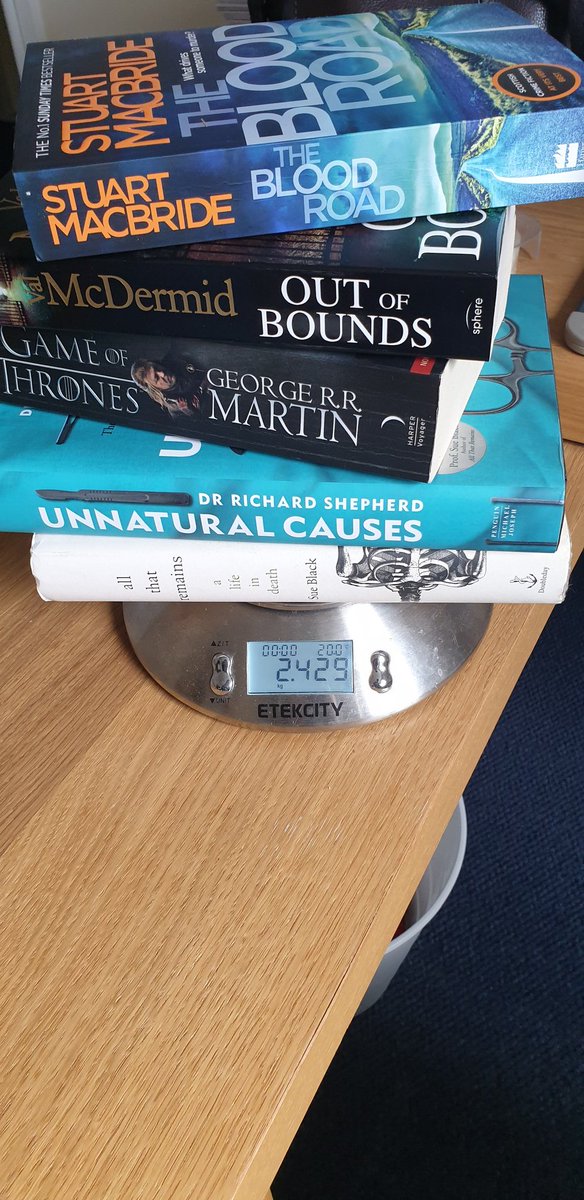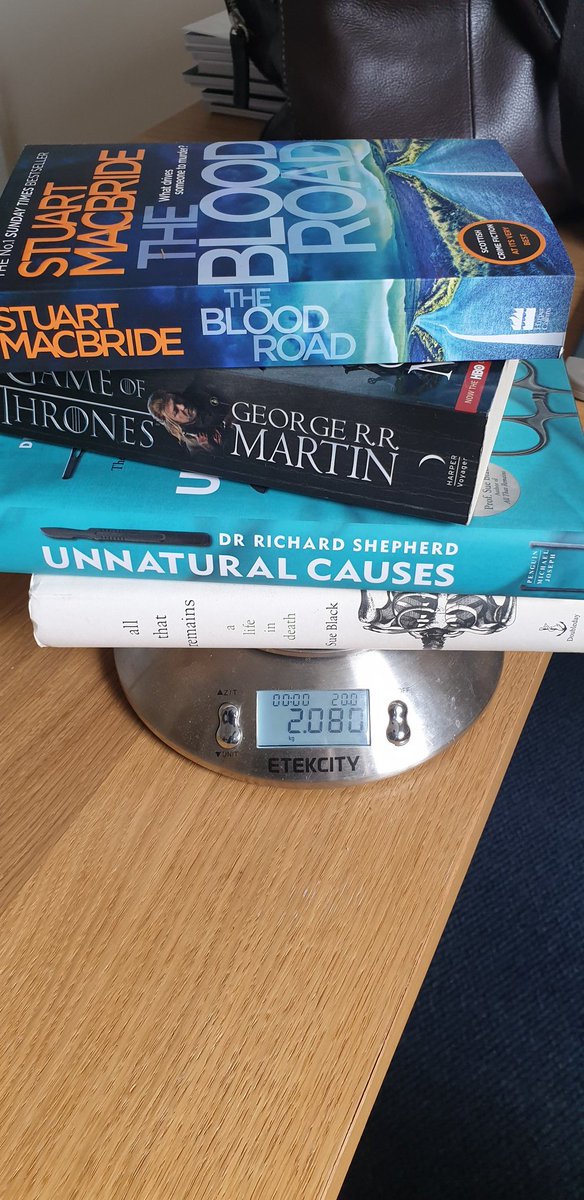
1/ Working on a little show and tell for my students next week looking at #bone strength, #biomechanics and the power of the cylinder.
#AnatEd #MedEd
Before we begin, anyone want to place bets on how much weight one piece of paper can support?
#AnatEd #MedEd
Before we begin, anyone want to place bets on how much weight one piece of paper can support?
2/ Step 1: Take an ordinary A4 sheet of blank 80gsm printer paper and a few bits of sellotape*.
(*other brands are available)
Step 2: roll slightly over one turn and affic with said tape.

(*other brands are available)
Step 2: roll slightly over one turn and affic with said tape.


3/ Step 3: Begin carefully applying loads to the superior aspect of the cylinder. #unnaturalcauses @GRRMspeaking 



4/ Loading continues, pausing for 30 seconds after each new weight is added. @ProfSueBlack @StuartMacBride 



6/ Sadly disaster struck when i turned to pick up my next weight (@BarristerSecret). Alas the literary brilliance above, or perhaps the threat of more to come, proved to be too much for this intrepid cylinder. 

7/ So the final tally: our one brave paper cylinder supported 2, 429 g for over 30 seconds before failure. It quite successfully supported 2,080 g without much difficulty at all. 



8/ Now imagine that one paper cylinder is a group of several hundred cylinders, and each cylinder is made of many cylindrical layers stuck together.
This is exactly the arrangement in cortical bone - the 'shell' that makes up the majority of long bones.
(Image via @3D4Medical)
This is exactly the arrangement in cortical bone - the 'shell' that makes up the majority of long bones.
(Image via @3D4Medical)

9/ Each cylindrical unit - each osteon - runs along the long axis of the bone, and gives it its remarkble strength!
Osteons are also surrounded by (and filled with) cells dedicated to monitoring, maintaining and adapting the surrounding bone to keep everything tickety-boo.
Osteons are also surrounded by (and filled with) cells dedicated to monitoring, maintaining and adapting the surrounding bone to keep everything tickety-boo.

10/ Think on this the next time someone dares to suggest that bones are anything less than absolutely fascinating - and this is even before we get into anything weird and wonderful!
11/11 Le Fin!
Thanks for bearing with - hopefully an interesting series of tweets!
Now just got to repeat this whole process live in front of students next week 🤣
(For the super-keen, bonus tweets below!)
Thanks for bearing with - hopefully an interesting series of tweets!
Now just got to repeat this whole process live in front of students next week 🤣
(For the super-keen, bonus tweets below!)
12/11 BONUS ROUND!
This system works brilliantly, but only if you apply forces in the correct direction. Any atypical or unexpected loading can have disasterous consequences for bone integrity.
These unnatural forces will very often result in failure - i.e. a fracture / break.
This system works brilliantly, but only if you apply forces in the correct direction. Any atypical or unexpected loading can have disasterous consequences for bone integrity.
These unnatural forces will very often result in failure - i.e. a fracture / break.
13/11 BONUS BONUS ROUND!
Also shown is an excellent example of plastic deformation - the 'bone' (paper) has been permanently altered by the bending forces, and cannot now be put back to its original shape.
Also shown is an excellent example of plastic deformation - the 'bone' (paper) has been permanently altered by the bending forces, and cannot now be put back to its original shape.

14/11 The same thing can happen to bone if you load it beyond its natural capacity, but not quite enough to cause a full break.
Image courtesy of @Radiopaedia, rID 44173. Radiograph of forearm from lateral - side - view. It should NOT bend like that in the middle. #ouch
Image courtesy of @Radiopaedia, rID 44173. Radiograph of forearm from lateral - side - view. It should NOT bend like that in the middle. #ouch

@threadreaderapp unroll
• • •
Missing some Tweet in this thread? You can try to
force a refresh




